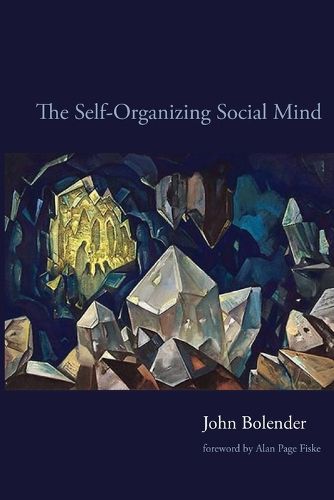Readings Newsletter
Become a Readings Member to make your shopping experience even easier.
Sign in or sign up for free!
You’re not far away from qualifying for FREE standard shipping within Australia
You’ve qualified for FREE standard shipping within Australia
The cart is loading…






A proposal that the basic mental models used to structure social interaction result from self-organization in brain activity.
A proposal that the basic mental models used to structure social interaction result from self-organization in brain activity.
In The Self-Organizing Social Mind, John Bolender proposes a new explanation for the forms of social relations. He argues that the core of social-relational cognition exhibits beauty-in the physicist's sense of the word, associated with symmetry. Bolender describes a fundamental set of patterns in interpersonal cognition, which account for the resulting structures of social life in terms of their symmetries and the breaking of those symmetries. He further describes the symmetries of the four fundamental social relations as ordered in a nested series akin to what one finds in the formation of a snowflake or spiral galaxy. Symmetry breaking organizes the neural activity generating the cognitive models that structure our social relationships.
Bolender's primary claim is that there exists a social pattern generator analogous to the central pattern generators associated with locomotion in many animal species. Spontaneous symmetry breaking structures the activity of the social pattern generator just as it does in central pattern generators.
Bolender's hypothesis that relational cognition results from self-organization is entirely novel, distinct from other theories that describe sociality in terms of evolution or environment. It presents a picture of social-relational cognition as resembling something inorganic. In doing so it reveals deep connections among cognition, biology, and the inorganic world. One can go too far, he acknowledges, in taking a solely dynamical view of the mind; the mind's innate functional complexity must be due to natural selection. But this does not mean that every simple mental feature is the result of natural selection. By noting a descending symmetry subgroup chain at the core of relational cognition, Bolender takes the first step in an important investigation.
Bradford Books imprint
$9.00 standard shipping within Australia
FREE standard shipping within Australia for orders over $100.00
Express & International shipping calculated at checkout
A proposal that the basic mental models used to structure social interaction result from self-organization in brain activity.
A proposal that the basic mental models used to structure social interaction result from self-organization in brain activity.
In The Self-Organizing Social Mind, John Bolender proposes a new explanation for the forms of social relations. He argues that the core of social-relational cognition exhibits beauty-in the physicist's sense of the word, associated with symmetry. Bolender describes a fundamental set of patterns in interpersonal cognition, which account for the resulting structures of social life in terms of their symmetries and the breaking of those symmetries. He further describes the symmetries of the four fundamental social relations as ordered in a nested series akin to what one finds in the formation of a snowflake or spiral galaxy. Symmetry breaking organizes the neural activity generating the cognitive models that structure our social relationships.
Bolender's primary claim is that there exists a social pattern generator analogous to the central pattern generators associated with locomotion in many animal species. Spontaneous symmetry breaking structures the activity of the social pattern generator just as it does in central pattern generators.
Bolender's hypothesis that relational cognition results from self-organization is entirely novel, distinct from other theories that describe sociality in terms of evolution or environment. It presents a picture of social-relational cognition as resembling something inorganic. In doing so it reveals deep connections among cognition, biology, and the inorganic world. One can go too far, he acknowledges, in taking a solely dynamical view of the mind; the mind's innate functional complexity must be due to natural selection. But this does not mean that every simple mental feature is the result of natural selection. By noting a descending symmetry subgroup chain at the core of relational cognition, Bolender takes the first step in an important investigation.
Bradford Books imprint